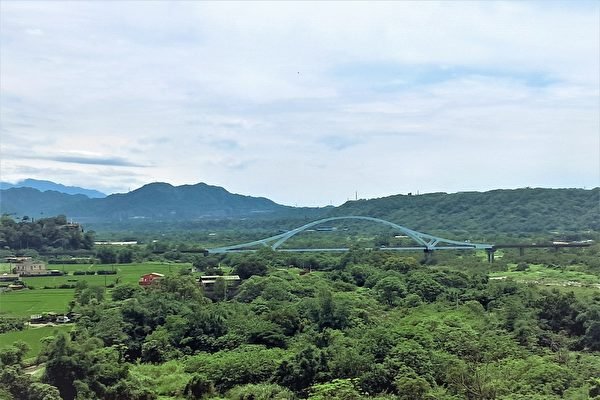The Taoyuan Daxi Wood Art Museum in Taiwan officially opened in March 2015, offering free admission for visitors. It is Taiwan’s first “museum without walls,” connecting the local woodcraft industry, folk culture, and historical monuments, creating a multi-faceted museum that enriches spiritual levels and showcases the enchanting beauty of Daxi, known for its rich natural, cultural, and woodworking heritage.
Daxi is located in the upper reaches of the Dahan River and is one of the earliest developed areas in Taoyuan County. Since the Qing Dynasty, river transportation has been well developed, and by the late 18th century, Daxi was an important hub for goods such as timber, tea leaves, and camphor, serving as a transportation hub.
Camphor wood is commonly used in Daxi’s wooden furniture, while cypress is used for restoration purposes. The woodworking products produced in Daxi are delicate and of high quality. During its peak, the most popular products included furniture for ceremonies and celebrations known as “ancestor’s table” and bridal dowry items like dressing tables and wardrobes.
The Daxi Wood Art Eco-Museum, simply known as the Wood Museum, is not a standalone building but a collection of several buildings dating back to the Japanese colonial period in the 1920s. These buildings, including the Li Tengfang Mansion, Building One, Wood Living Hall, Furniture Hall, Wude Hall, Artisan Hall, Daxi Historical Hall, Feng Fei-fei Story Gallery, 624 Story Gallery, Craft Exchange Hall, and Craft Base, all have significant historical value and retain their original architectural features.
Each building in the museum showcases unique features, like the Artisan Hall where woodworks by master craftsmen are displayed, showcasing intricately carved items such as cup holders, bitter melon sculptures, and plant carvings, each a priceless treasure.
Building One houses adorable wooden dolls depicting the local customs of Daxi residents. The Wood Living Hall and Furniture Hall are interconnected buildings focused on the theme of “Daxi Wood Art Lifestyle.”
Among them, the Daxi Historical Hall, Feng Fei-fei Story Gallery, and 624 Story Gallery left a lasting impression on me. The Historical Hall is easily recognizable by the lifelike wood sculptures of two sika deer outside, beautifully capturing the essence of woodworking craftsmanship.
The Feng Fei-fei Story Gallery, dedicated to the beloved Taiwanese singer, showcases her remarkable life through themed collections, including her records, movie posters, magazines, awards, and written articles. Visitors can also scan QR codes to watch videos about her.
Feng Fei-fei released 77 albums, 62 compilations, 24 special editions, and 7-inch singles, with a total of 8,000 minutes of songs, earning her the title of a superstar. She won prestigious awards multiple times and was named the most popular artist in Singapore in 1985. Unfortunately, she passed away in 2012 due to lung cancer, and her birthday, August 20th, has been designated as “Feng Fei-fei Day” by the Taoyuan County Government.
The 624 Story Gallery features the annual Daxi Puji Temple Emperor Guan’s Birthday Celebration, a traditional procession that has been held for over a century, known as the “624 Celebration” to locals, akin to a second New Year for the people of Daxi. The procession features dragon and lion dances, much like the festive celebrations during the Lunar New Year, adding vibrant colors and lively energy to the event.
Situated on the banks of the Dahan River, the Wood Museum provides a scenic riverside walk where visitors can admire the picturesque landscape and the Baroque-style Daxi Bridge. During the day, the bridge’s retro arches and intricate carvings are a sight to behold, while at night, the cable lines light up, creating a dazzling and enchanting atmosphere, earning the bridge the nickname “Lover’s Bridge.”
Daxi Zhongzheng Park is a relaxing green space along the riverbank, offering serene walks amidst lush greenery. Established in 1909 as Daxi’s first park, it has undergone several renovations and expansions, with a renaming in 1975 to “Zhongzheng Park” in honor of former President Chiang Kai-shek’s contributions to Taiwan. The park features a bronze statue of the late president for visitors to admire.
On holidays, Daxi Old Street bustles with crowds as it is a favorite destination for food enthusiasts. The street is lined with a variety of food stalls offering a plethora of local delicacies such as grilled sausages, stinky tofu, noodle soups, fried rice, rice cakes, braised dried tofu, as well as sweet treats like peanut brittle and tofu pudding, satisfying the cravings of visitors after exploring the Wood Museum.
Visiting Daxi is akin to a feast of spiritual nourishment, where every corner is a living museum. It offers a cultural enrichment journey filled with traces of humanity and history, transcending rigid concrete walls. Daxi itself is a museum, inviting visitors on a knowledge adventure brimming with cultural and historical significance.
Recommended Reads:
– Breathe in the Forest: Wander through the Forestry Relics at Taoyuan’s Dongyan Mountain Trail
– Cycling Adventure: Explore the Golden Riverside Bike Path along the Danshui River
– The World’s Most Luxurious Train in India: A Mobile Five-Star Hotel
Enjoy your cultural exploration!

